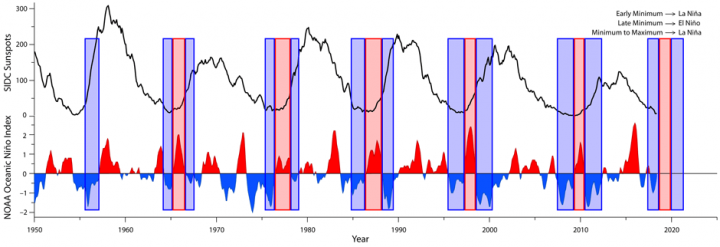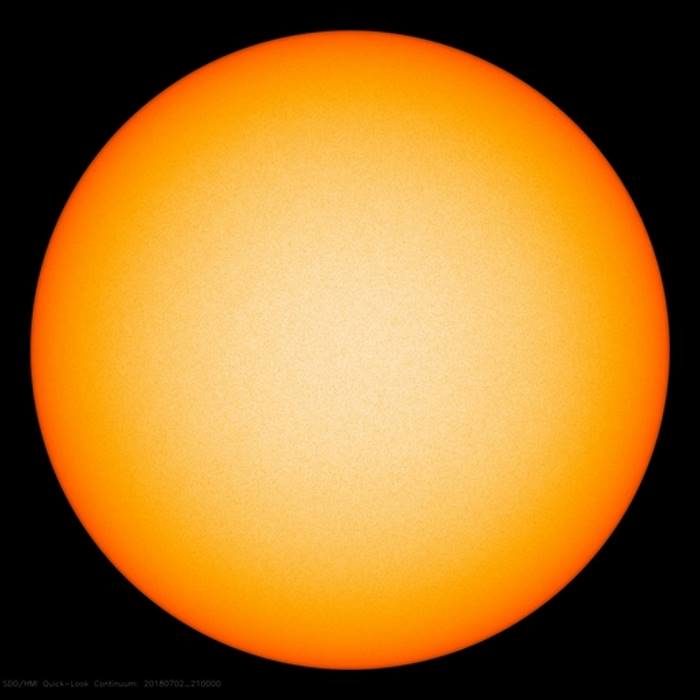As they reported at the AGU 2017 Fall Meeting, the termination of the solar magnetic activity bands at the solar equator that mark the end of the Hale cycle coincides since the 1960's with a shift from El Niño to La Niña conditions in the Pacific.
Predicting the La Niña of 2020-21: Termination of Solar Cycles and Correlated Variance in Solar and Atmospheric Variability
"We look at the particulate and radiative implications of these termination points, their temporal recurrence and signature, from the Sun to the Earth, and show the correlated signature of solar cycle termination events and major oceanic oscillations that extend back many decades. A combined one-two punch of reduced particulate forcing and increased radiative forcing that result from the termination of one solar cycle and rapid blossoming of another correlates strongly with a shift from El Niño to La Niña conditions in the Pacific Ocean."More information is available at the talk they gave at the last SORCE Meeting:
Terminators: The Death of Solar Cycles and La Niña 2020
As they say in the talk, the probability that the pattern is due to chance is very low. Particularly since the termination of the magnetic activity bands at the equator coincides quite precisely with the El Niño-La Niña shift.
Analysis of the ONI (Oceanic Niño Index) data from NOAA, and sunspot number from SIDC shows
the following pattern:

The pattern appears to be repeating again this minimum. The early minimum has been associated to La Niña conditions and, as we move towards the late minimum, an El Niño is being forecasted for late 2018. The authors made their claim for a 2020 La Niña before the 2018 El Niño was forecasted. Now a repetition of the pattern looks even more probable and we should expect a La Niña when solar activity increases in late 2020 to 2021.




Comment: The reason why is probably because global weather (and much more) is intricately linked with solar activity, and this is evident on our planet and the others in our solar system:
- Cosmic climate change: Is the cause of all this extreme weather to be found in outer space?
- Solar System-wide 'climate change': Jupiter's moon Io seeing increasing volcanic activity
- Giant 'wave' traversed Venus in December 2015 - Largest-ever observed in solar system
- Cosmic rays increased 12% this year plus an awesome 'diamond dust' sun halo sighted in Montana (PHOTOS)
- Is there a connection between cosmic rays, earthquakes and volcanic eruptions?
Also check out SOTT radio's: Behind the Headlines: Earth changes in an electric universe: Is climate change really man-made?